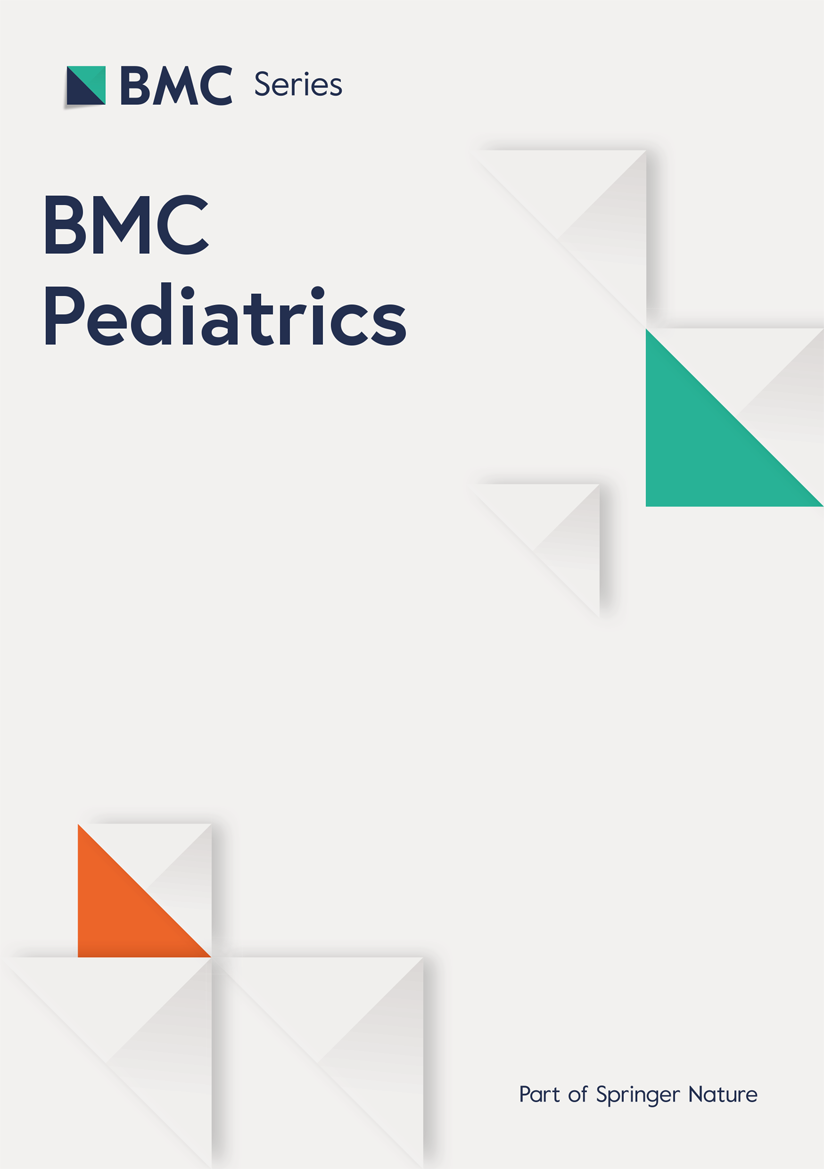Ethnic group, socioeconomic position and pregnancy outcome: a mediation model through latent class
Ethnic group, socioeconomic position and pregnancy outcome: a mediation model through latent class
Preterm birth (PTB) and small-for-gestational-age (SGA) disproportionately affect women who are Black or Asian. Structural racism produces health inequalities. Identifying latent socioeconomic classes may help to understand the role socioeconomic position (SEP) plays in this inequality.
We included women from the baseline survey of the UK-based Millennium Cohort Study who had a live singleton pregnancy and gave birth from 1 September 2000 to 11 January 2002. Relative risks (RR) with 95% confidence intervals (CI) for PTB and SGA were estimated for ethnic groups compared with women who were white, with adjustment for SEP. Latent SEP classes were then identified using diverse prospective socioeconomic data. Mediation of health inequality via SEP and latent SEP class was tested.
Among 17 701 included women, 6.7% (95% CI 6.2%, 7.1%) experienced PTB and 7.0% (6.5%, 7.5%) SGA. We found evidence that the association between ethnic groups and PTB was mediated by latent SEP class for women who were Bangladeshi, Black African, Black Caribbean and Pakistani, with indirect ‘effects’ of RR 1.08 (1.01, 1.16), 1.07 (1.01, 1.14), 1.06 (1.00, 1.12) and 1.06 (1.00, 1.13), respectively, relative to White. When using the simple measures of maternal education, household income and marital status, we found no evidence of mediation except for a potential protective effect among Indian women, relative to White. We found similar evidence for SGA, with indirect effects through latent SEP class of RR 1.35 (1.19, 1.52), 1.32 (1.17, 1.48), 1.26 (1.12, 1.41), 1.27 (1.13, 1.42), respectively. When using the simple measures, we found evidence of mediation only among Black African and Black Caribbean women, with RR 1.16 (1.04, 1.30) and 1.12 (1.00, 1.26), respectively, relative to White.
The determinants of inequality appeared to differ by ethnicity. We demonstrated the mediating role of individual-level SEP and a role for latent class analysis to interpret complex combinations of socioeconomic data.
Data may be obtained from a third party and are not publicly available.
http://creativecommons.org/licenses/by-nc/4.0/
This is an open access article distributed in accordance with the Creative Commons Attribution Non Commercial (CC BY-NC 4.0) license, which permits others to distribute, remix, adapt, build upon this work non-commercially, and license their derivative works on different terms, provided the original work is properly cited, appropriate credit is given, any changes made indicated, and the use is non-commercial. See: http://creativecommons.org/licenses/by-nc/4.0/.
If you wish to reuse any or all of this article please use the link below which will take you to the Copyright Clearance Center’s RightsLink service. You will be able to get a quick price and instant permission to reuse the content in many different ways.
WHAT IS ALREADY KNOWN ON THIS TOPIC
WHAT THIS STUDY ADDS
HOW THIS STUDY MIGHT AFFECT RESEARCH, PRACTICE OR POLICY
Preterm birth (PTB) before 37 weeks of gestation and small-for-gestational-age (SGA) birth weight both confer the risk of neonatal morbidity and mortality.1 Women who are Black or Asian are at greater risk of both outcomes2–4 compared with women who are White. Few studies have provided higher-resolution data even though pregnancy outcomes are known to differ between individual ethnic and racial groups. In the UK, women who were Black Caribbean were at greatest risk of PTB and women who were Black Caribbean and Pakistani were at greatest risk of neonatal mortality.5 The association between ethnic groups and PTB has been conceptualised as arising from systemic racism which produces socioeconomic differences, stress, harmful environments and health behaviours which in turn give rise to the more immediate biological mechanisms of PTB.6 The same may be said for babies born SGA for which undernutrition, smoke exposure and medical comorbidities are risk factors.
Socioeconomic position (SEP) is a risk factor for both PTB and SGA.7–9 Mediation studies have shown that smoking may mediate the association between SEP and PTB as well as consistent evidence of a mediating role of physical health, body mass index (BMI) and alcohol consumption.10 The most common measure of SEP in these studies was maternal education, followed by occupation and then income but not multiple dimensions of SEP. SEP pathways are not as well-characterised for SGA but smoking status, low BMI and alcohol consumption may mediate a proportion of the relationship.11 12 A systematic review of socioeconomic risk factors and pregnancy outcomes found poor conceptualisation of modelling strategies and poor handling of confounding and mediation.13 Latent class analysis (LCA) of socioeconomic data may enable identification of interpretable groups to characterise the relationship between ethnic groups and PTB or SGA. Understanding the role of SEP may be beneficial when considering how to reduce ethnic inequalities across sequential determinants of poor pregnancy outcomes.14 15 The rationale for this research is that PTB and SGA could be better understood by investigation in a data set with a diverse range of socioeconomic measures of participants, including through LCA. The aim is to understand how SEP may mediate the relationships between ethnic groups and PTB or SGA and whether the latent class of SEP may be a useful tool to do so.
The data used for this study was collected at the baseline survey of the Millennium Cohort Study (MCS)16 from parents of babies born between September 2000 and January 2002. The MCS is an ongoing birth cohort that studied the socioeconomic conditions during the perinatal period and onwards. Sampling occurred at the level of the electoral ward, with oversampling of electoral wards in socioeconomically disadvantaged areas and areas with a greater proportion of women from ethnic minority backgrounds. The baseline survey was administered at approximately 9 months following birth. Data have been validated through linkage to birth notification data among women who provided this additional consent.17 We included women who had a live singleton pregnancy and who responded to the MCS baseline survey themselves. We excluded 441 eligible women with missing data from the main complete case analyses.
The outcomes were PTB (any birth below 37 completed weeks of gestation) and SGA (birth weight for gestational age and sex within the lowest decile according to the Intergrowth-21 international growth chart18).
Ethnic groups were self-reported and classified by the interviewer according to a list of up to 15 main categories (in England, although the number of groups varied slightly by country) and an expanded list of 78 categories if ‘any other’ group. These data were then collapsed into a seven-group variable as part of the central study data-cleaning procedure:
Body mass index (BMI; standard WHO classes<18.5 kg/m2, 18.5–24.9 kg/m2, 25–29.9 kg/m2, ≥30 kg/m2)
Smoking status (Non-smoker, <10 cigarettes/day in pregnancy, >10 cigarettes/day in pregnancy)
No antenatal care received (yes, no)
Planned pregnancy (yes, no)
Baseline characteristics were reported according to maternal ethnic group. Frequencies and weighted means and proportions were reported to account for the survey design. Proportions for PTB and SGA were reported with 95% confidence intervals (CIs). We estimated relative risks (RR) and 95% CIs for PTB and SGA according to ethnic group using Poisson regression with robust standard errors. The association was estimated without adjustment, with adjustment for age and parity, then additionally for socioeconomic variables (household income, maternal education, marital status in pregnancy), then additionally for pregnancy health variables (planned pregnancy, antenatal care, smoking status) and finally for BMI. To estimate the proportion of inequality potentially explained by SEP (household income, maternal education and marital status in pregnancy) for PTB or SGA, mediation analyses were performed using the ‘khb’ command in Stata.19 The ‘total effect’ (all pathways), ‘direct effect’ (pathways other than the potential mediators tested) and ‘indirect effect’ (potential mediating pathways tested) were estimated for the association between ethnic group and PTB or SGA through SEP. In this causal model, we adopted the weak assumptions approach of VanderWeele and Robinson20 and investigated what the risk would be should SEP be equal among all ethnic groups, assuming no unmeasured confounding between outcomes and ethnic group, nor SEP and ethnic group, nor outcomes and SEP. We use the term “effect” based on the assumptions of this causal model. When handling multiple mediators, assumptions on the absence of interaction and confounding are strong but mediators may also act as confounders.21 An alternative to reduce the risk of complex or multiway interactions is to identify latent classes.22
Latent class analysis
In order to include a broader range of measures but avoid an overly complex model,23 we explored latent socioeconomic classes using the ‘gsem’ command in Stata. We added paternal education, maternal and paternal NSEC separately, home tenureship, satisfaction with an area of residence, vehicle access and durable goods ownership to the previous variables to constitute a multidimensional measure of household socioeconomic resources. We selected a solution based on the interpretation of the probabilities of SEP characteristics given class membership and compared the Bayesian Information Criterion, Akaike Information Criterion and degree of entropy. We report a three-class solution in which no model coefficients were constrained. Women were assigned to a class according to their highest membership probability if entropy was greater than 0.80. We repeated both the modelling for PTB and SGA on latent SEP class and the mediation modelling procedure as before, adjusted for age and parity. Statistical analyses were conducted using Stata V.16 (StataCorp, College Station, Texas, USA).
Missing data
We tested for sensitivity to the inclusion of observations with missing data and to the inclusion of BMI. All missing covariables were imputed using the multiple imputation with chained equations algorithm. To strengthen the missing at random assumption, additional auxiliary variables were included which were both associated with missingness (predominantly of BMI) and the known values of variables with missing data, including self-rated general health, garden access, involvement of father and fertility treatment. A total of 50 data sets were imputed.
We included 17 701 women who had live singleton pregnancies, responded to the survey and had complete data. The study flow diagram is shown in figure 1. Altogether, 1189 women experienced PTB (1189/17 701, 6.7% (95% CI 6.2%, 7.1%)) and 1350 had a baby born SGA (1350/17 701, 7.0% (95% CI 6.5%, 7.5%)). Women who were Bangladeshi or Pakistani had the lowest mean ages, the highest proportions of women with no formal education and the lowest equivalised household incomes compared with other groups. They also had the highest proportion of marriage, alongside women who were Indian. Women who were Indian or White had the highest equivalised household incomes compared with others. Women who were Black African had the highest maternal age, a greater proportion of educational attainment at both extremes relative to the population total and along with women who were Black Caribbean, the highest proportions of single marital statuses, relative to other groups. Smoking was most common among women who were White or Black Caribbean. The ethnic composition and baseline characteristics of the sample are found in table 1. PTB was the most common among Indian (45/447, 9.6% (95% CI 7.0%, 13.0%)) and least common among Pakistani (59/833, 6.1% (95% CI 4.7%, 7.9%)) groups. On the international ‘Intergrowth’ chart, SGA was most common among Indian (98/447, 18.1% (95% CI 13.4%, 24.0%)) and least common among White (932/14 927, 6.2% (95% CI 5.7%, 6.6%)) groups. The prevalence of outcomes by ethnic group is shown in table 2.
Table 1
Baseline characteristics according to ethnic group
Table 2
Prevalence of PTB and SGA according to ethnic group
For PTB, while the point estimates suggested a positive association for all groups except Pakistani women, there was only strong evidence for health inequality among Indian women who were at greater risk (RR 1.46 (95% CI 1.06, 2.02)), relative to White. Inequality increased once age, parity and SEP were adjusted for (RR 1.64 (95% CI 1.17, 2.29)). After adjustment, the point estimates for women who were Black African or Black Caribbean reduced but increased among other groups. The point estimates either did not change or increased after adjustment for smoking status, planned pregnancy and antenatal care.
Inequality for SGA using the Intergrowth growth chart was marked, with the greatest risk among women who were Bangladeshi (RR 2.65 (95% CI 2.10, 3.34)), Indian (RR 2.94 (95% CI 2.20, 3.95)) or Pakistani (RR 2.49 (95% CI 2.08, 2.97)), relative to white. Women who were Black African (RR 1.70 (95% CI 1.21, 2.40)), Black Caribbean (RR 1.59 (95% CI 1.06, 2.39)) or from ‘other ethnic groups’ (RR 1.75 (95% CI 1.28, 2.40)) were at moderately increased risk relative to White. After adjustment for maternal age, parity, education, income and marital status, the point estimates among all groups were attenuated except for Indian women, which increased. Inequality appeared to increase after accounting for smoking status, planned pregnancy and antenatal care. The multivariable analyses for PTB and SGA are found in table 3.
Table 3
The association between ethnic groups and outcomes
In the mediation analyses of ethnic groups and PTB via SEP using multiple mediators (maternal education, income, marital status), significant total and direct ‘effects’ were similarly only observed among women who were Indian. Among this group, SEP may be protective, with weak evidence of a reduction in inequality (indirect effect RR 0.93 (95% CI 0.87, 1.00), p=0.066), relative to White women. This equated to a reduction in inequality of 15%, relative to White women. For SGA, there was evidence of mediation via SEP for women who were Black African and Black Caribbean (indirect effects RR 1.16 (95% CI 1.04, 1.30) and 1.12 (1.00, 1.26), respectively), equating to 29% and 10% of the inequality, respectively, relative to women who were White.
When we explored the latent class of SEP, a three-class solution was identified with entropy of 0.83. Based on the predicted probabilities of socioeconomic characteristics given class membership, we identified groups according to: ‘advantaged’ (A), more likely to be married homeowners in professional occupations with high income, ‘blue collar/white collar couples’ (BW), more likely to be cohabiting or married homeowners or private renters in routine or intermediate occupations with middle incomes and ‘disadvantaged’ (D), in routine or no occupation with low income. As the degree of entropy suggested a good degree of separation, women were then assigned their most probable latent class. The predicted probabilities given class membership are reported in online supplemental figure 1.
When we repeated the mediation analysis for latent class of SEP with similar adjustment for maternal age and parity, there was evidence of an indirect ‘effect’ on PTB for women who were Bangladeshi (RR 1.08 (95% CI 1.01, 1.16)), Black African (RR 1.07 (95% CI 1.01, 1.14)), Black Caribbean (RR 1.06 (95% CI 1.00, 1.12)) and Pakistani (RR 1.06 (1.00, 1.13)). This represented 60% of the difference between women who were Bangladeshi compared with White and 26% and 28% for women who women were Black African or Black Caribbean, respectively, compared with White. For SGA, there was evidence of an indirect ‘effect’ for all groups except for women who were Indian. The indirect ‘effects’ were RR 1.35 (95% CI 1.19, 1.52, 29% of inequality), 1.32 (1.17, 1.48, 48% of inequality), 1.26 (1.12, 1.41, 53% of inequality), 1.27 (1.13, 1.42, 25% of inequality) and 1.13 (1.02, 1.26, 20% of inequality) for women who were Bangladeshi, Black African, Black Caribbean, Pakistani or from an ‘other ethnic group’, respectively, compared with women were White. The full results for all mediation analyses are shown in table 4.
Table 4
Relative risks for total, direct and indirect effects for PTB and SGA through SEP (multiple mediators) and SEP class
Overall, 2.4% of women had missing data for any variable except BMI, increasing to 10% including BMI. Data on BMI were missing for 1454 of the included women (1,454/17,701, 8.2%) who had otherwise complete data. The results following multiple imputations were insensitive to the inclusion of women with missing data on BMI. As the data were nearly complete other than BMI, the results following adjustment for the imputed BMI are reported as model four in table 2.
We identified health inequality according to the ethnic group for PTB under 37 weeks and SGA according to the Intergrowth chart that is not customised for ethnic group. The absolute risk of PTB was greatest among Indian, Black Caribbean or Black African women. The absolute risk of SGA was greatest among Indian, Pakistani and Bangladeshi women. We observed that adjustment for SEP attenuated the risk for both outcomes among women who were Black African or Black Caribbean and, within the assumptions of these casual models, we observed that SEP disadvantaged women who were Black Caribbean with respect to PTB and Black African or Black Caribbean with respect to SGA. We observed the opposite association for Indian women for both PTB and SGA, whose relative advantage through SEP may mask other sources of inequality, compared with women who were White. Importantly, women who were Indian were still at greater risk of PTB and SGA compared with those who were White. We identified multidimensional latent classes of SEP which were associated with both ethnic group and pregnancy outcomes. The latent SEP class explained a greater proportion of inequality for PTB and SGA than the simple SEP measures, with an indirect ‘effect’ across most groups. Class membership explained up to 60% of the health inequality for SGA (among Bangladeshi women).
The findings accord with the only other UK-based study to investigate the risk of PTB through socioeconomic measures (deprivation)5 which found 35% of inequality for PTB between ethnic groups was potentially mediated by small-area deprivation. In this large study using birth registration data, inequality in PTB was greater than that measured in the MCS. Socioeconomic classes identified in another diverse UK-based birth cohort showed that socioeconomic characteristics differed by ethnic group24 although these classes were not compared with health outcomes. Further evidence comes from birth certificate data from the USA.25–27 These data include a diverse range of socioeconomic information and the sample size to investigate more complex relationships between variables, although inequality may be qualitatively different in different environments and countries. Although we only observed evidence on the mediating role of SEP for PTB among women who were Indian, the direction of effect for the point estimates agreed with previous studies in larger data sets.28
We focused on the role of SEP because health inequalities are produced by systematic differences in the socioeconomic environments between groups.29 These differences may lead to acquired differences in health over the life course, including medical comorbidities that occur upstream of outcomes in pregnancy.30 Within a healthcare system, communication barriers and conscious and unconscious biases of healthcare providers may produce or exacerbate inequality too.31 As well as interpersonal racism and bias, education and training of health professionals, healthcare guidance and policies and workforce culture are other sources of systematic racism that may produce inequality closer to the time of birth.32 Other explanations for inequality include differences in access to or the quality of healthcare.33 34 Treatments that reduce the risk of PTB35 need to reach women from high-risk groups; for example, the level of antenatal care may contribute to health inequality.36 We observed differences in the level of antenatal care between ethnic groups but these did not appear to explain inequality in our multivariable analyses. Focussing on the provision of care through specialist clinics is a widely-used strategy but the evidence for this model, and therefore understanding how the model could be used to reduce inequality, is limited.37 There is randomised evidence that women who received care in either a midwifery-led continuity of care model or any form of alternative to routine antenatal care had a lower risk of PTB38, however. Tackling the underlying determinants of inequality is obviously challenging but in a healthcare context, there may be opportunities to reduce inequalities in pregnancy closer to the time of the outcome.
The strengths of this study include the combination of diverse measures of SEP to understand more complex socioeconomic distinctions between groups. Mediation analyses are limited by the assumptions that associations between ethnic groups, SEP and PTB/SGA are unbiased by confounding. We rely on the time-ordered nature of exposure, SEP and birth outcomes and the forward causal flow through potentially unmeasured mediating pathways. The unadjusted estimates are most informative because they do not make adjustments for what may be sequential mediators from SEP to the outcomes, such as antenatal care, smoking or BMI. The association between SEP and pregnancy outcomes may still be subject to unmeasured confounding.39 These models cannot be overinterpreted as supportive of causal inference. We did not include maternal age in our LCA as although this may be related to SEP, it may also represent other cultural influences. Maternal age may nevertheless contribute to health inequality.40 Although we investigated the interaction between income and education, ethnic group and income and ethnic group and education, the sample was likely insufficient to characterise these relationships. Instead, we identified latent socioeconomic classes. This may not only better understand how SEP affects health but may protect from the risk of bias when investigating multiple mediators and complex causal structures21–23 although we did not identify any studies of mediation via SEP which considered interaction.25–27 A limitation is that data were collected through maternal recall at 9 months. Recall of gestational age and birth weight in the MCS was reliable when compared with birth notification data.41 42 The use of the dichotomised outcomes reduced the risk of misclassification. We limited measures of SEP to antenatal measures; however, we included household income as reported at 9 months. We therefore assume that household economic conditions following birth represented those prior to and during pregnancy although this may not be the case for all women. Finally, the latent class solution may be subject to overfitting. In this exploratory analysis, we did not conduct an interval validation although did validate the classes with respect to health outcomes.
Healthcare research efforts could focus on investigating and exploiting modifiable risk factors that are proximal to health outcomes or deploying the available resources for PTB risk assessment and SGA detection most effectively. This does not necessarily mean developing services or recommending interventions solely based on ethnic groups32 but may include auditing interventions and services with a specific focus on ethnic groups and taking steps to support access and culturally-informed counselling. The underlying socioeconomic determinants require policy-level interdisciplinary approaches over a longer timeframe.
Socioeconomic determinants of inequality differed between ethnic groups. A relatively advantaged SEP sometimes masked other drivers of inequality. Up to 60% of health inequality for PTB and 53% for SGA was explained by a multidimensional latent class of SEP within some ethnic groups. Further research may validate this class structure with respect to other health outcomes and develop models using larger data sets to further characterise determinants of inequality.
Data may be obtained from a third party and are not publicly available.
Not applicable.
The first survey of the Millennium Cohort Study was conducted following ethical approval from the South West Medical Research Ethics Committee MREC/01/6/19.











